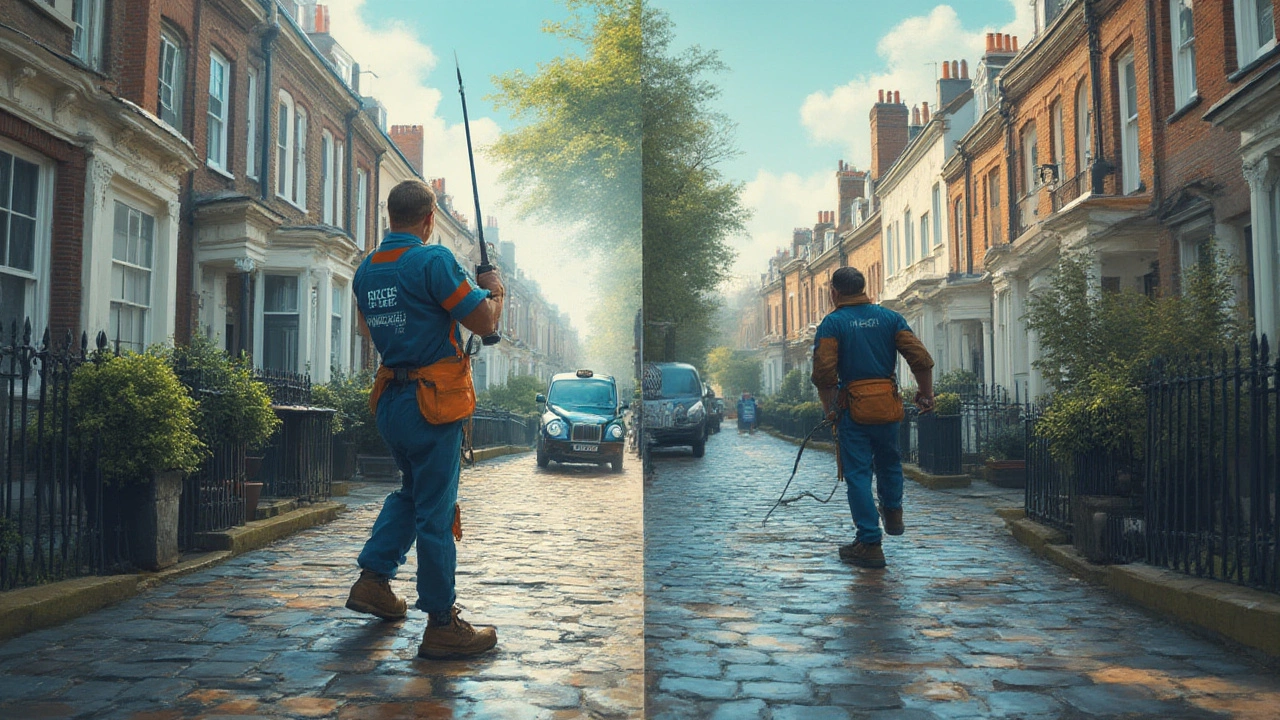If you’ve ever eyeballed your home’s exterior and winced at the spotty dirt, algae patches, or those mysterious stains growing a bit bolder every year, pressure washing can seem like magic. There’s real satisfaction in that first pull of the trigger—watching years of grime strip away in seconds. But it’s easy to underestimate the time this job is really going to take. Those time-lapse videos online? They always skip the dull moments—moving ladders, fighting with hoses, taking breathers. So, how long does it really take to pressure wash a house? Here’s the detailed, realistic scoop—no sugarcoating.
What Impacts How Long Pressure Washing Takes?
The Internet is full of wild estimates: "You can do it in an afternoon!" or "Five hours, tops!" Honestly, that’s only sometimes true. It starts with the size of your house. A 1,000 square foot cottage is a dream compared to a 4,000 square foot two-story with all the trimmings—think porches, patios, and driveway add-ons. But size isn’t the only thing that matters. Let’s talk surfaces. Vinyl siding usually cleans up fast. Brick and stucco? You’ll spend extra time on stubborn spots and grooves. If your place features tons of nooks and decorative touches, expect that timeline to stretch.
Next, there’s the condition of your home’s exterior. If it’s been two years since the last wash, it’ll take longer. Caked-on mud, thick green lichen, or oily spots slow you down. Humidity and temperature matter, too. Hotter temps help stuff dry faster but can dry cleaning agents before they work, so what helps in one way slows you down in another. Even the layout counts. Lots of landscaping? Be prepared to cover plants and wrangle hoses around flower beds. Let’s not forget your own experience. If it’s your first time handling a pressure washer, expect more time as you figure out the settings, angles, and safety steps.
Breaking Down Time by House Size and Condition
Nothing’s worse than guessing at timing and getting it totally wrong, so let’s get concrete. The fastest pros, using high-powered machines and prepping ahead, can breeze through a small home (around 1,000 square feet) in about 1.5 to 2 hours. But the average person doing DIY? Make that closer to 3 or 4 hours, especially if you’re extra careful or learning as you go. Here’s a helpful table for an idea of what to expect. These numbers assume you’re cleaning ALL the siding, skipping the driveway, but possibly hitting porch railings.
| Home Size (sq ft) | DIY Time (hours) | Pro Time (hours) | Heavily Soiled Add-on (hours) |
|---|---|---|---|
| 1,000 | 3-4 | 1.5-2 | +1 |
| 2,000 | 4-6 | 2-3 | +1.5 |
| 3,000 | 6-8 | 3-4 | +2 |
| 4,000+ | 7-10 | 4-6 | +2.5 |
Every time you add a tricky detail—upper-level siding, extra porches, lattice under the deck—you add another half hour at minimum. If your home’s paint or siding is older or flaking, take it slow to avoid damage, so don’t rush. Even the best pressure washer can’t go faster than the surface—and safety—allow.

Tips and Tricks to Speed Up Pressure Washing
Who doesn’t want to save time and effort? Seasoned pros and happy DIYers have a few hacks up their sleeves for this job. Here are the ones that matter most:
- Start with a sweep—literally. Brush off loose debris first so the water can actually get to the grime.
- Mix your cleaning solution ahead of time. Typical household-sized exteriors need around 2-4 gallons.
- Soak down one side at a time. It’s tempting to pre-wet everything, but cleaning solutions work best when you focus on sections—less drying, less backtracking.
- Use the right nozzle. A 25-degree or 40-degree tip gives you solid coverage and safe pressure for most siding.
- Always work from the top down. This way, dirty water rinses downward and doesn’t streak what you’ve already cleaned.
- You’ll go faster with two people. One spraying, the other managing the hose or scrubbing stubborn patches by hand.
- Invest in an extension wand. This removes the need for constant up-and-down on ladders, which eats up tons of time.
- Protect the things you don’t want wet—outlets, doorbells, sensitive plants. Quick prep means no double-cleanup later.
- If you use soap, let it dwell 10-15 minutes before rinsing. This does more work for you and cuts down on passes.
- When in doubt, slow down a touch around window seals or vents—no faster job is worth leaks inside the walls.
Don’t forget, rental pressure washers vary in strength. Machines from big box stores often max out at 2000 PSI, so tasks take longer than if you spring for a pro-grade 3200 PSI washer. Still, for siding, more pressure isn’t always better—too much can gouge older wood, dent aluminum, or ruin paint. Use just enough to get the job done right without racing through and causing headaches that cost real money later.
DIY vs. Hiring a Professional: Realistic Pros and Cons
Plenty of homeowners think, “I can do this myself and save cash!” And yes, if you’ve got time, patience, and a bit of know-how, DIY can work. But weigh those real-time costs: Renting the machine, hauling it home, protecting your landscaping and outlets, and setting up—all before you even start. For most first-timers, pressure washing a standard home takes a full weekend, especially if you’re careful not to blast off paint or damage siding. If you run into tough stains or mold, pause to treat those areas, adding an hour or more.
Professionals have the gear and muscle memory to move quickly. The pressure washing services usually send a 2-person crew. One preps while the other sprays, which is a serious time-saver. They’ll have detergents designed for homes—some even biodegradable and less likely to harm landscaping. The flip side? Hiring out costs somewhere between $250 to $600, depending on house size, level of grime, and local rates as of 2025. So, it’s a tradeoff: cost for speed and professionalism, or personal time for saving money.
Still leaning DIY? Take breaks, check for missed patches in strong daylight, and consider pressure washing once a year. Keeping a regular schedule makes each session faster. No matter which route you take, set aside time for setup and cleanup—that’s moving furniture, covering electrical, and letting everything dry before you put stuff back.

What to Expect After Pressure Washing (and When to Repeat It)
After several hours of work, you’ll be surprised how different your home looks—siding will almost look new, colors pop, and all those little stains vanish. But pressure washing is just one layer of home care. Don’t expect it to repair worn paint, mend cracks, or restore rotted wood. It’ll reveal what needs fixing, though, so take some time to inspect things while everything’s clean and bright.
How often should you do this? Most experts—especially those working in areas with tough weather, lots of trees, or humidity—suggest cleaning your home’s exterior every 1 to 2 years. Keeping to this schedule makes each pressure wash session way easier and keeps mildew or algae from taking over. If you live near the beach, pollen-heavy areas, or any place with a lot of air pollution, annual washes make sense. Basically, if your siding loses its shine or you spot green or gray marks, it’s time. Regular care stretches out the life of your paint, keeps your home looking sharp, and even lowers allergy risks for your family from outdoor spores.
If you notice water isn’t breaking up grime anymore, don’t bump the pressure. Instead, use more detergent or let it sit longer before spraying. And a quick safety reminder: always wear eye protection and closed-toe shoes. Ladders are risky—consider an extension wand instead. Set aside a few towels in case water sneaks in under doors or windows. When you finish, do a walkaround. You might catch a few missed spots or a patch of grime hiding under an eave—better to spot it now than when you’re already putting the gear away.
Pressure washing isn’t rocket science, but it’s not a five-minute job either. Get your gear, block out enough time, and go in with realistic expectations. The clean is worth it—and knowing what’s underneath all that grime? That’s peace of mind you can see.
